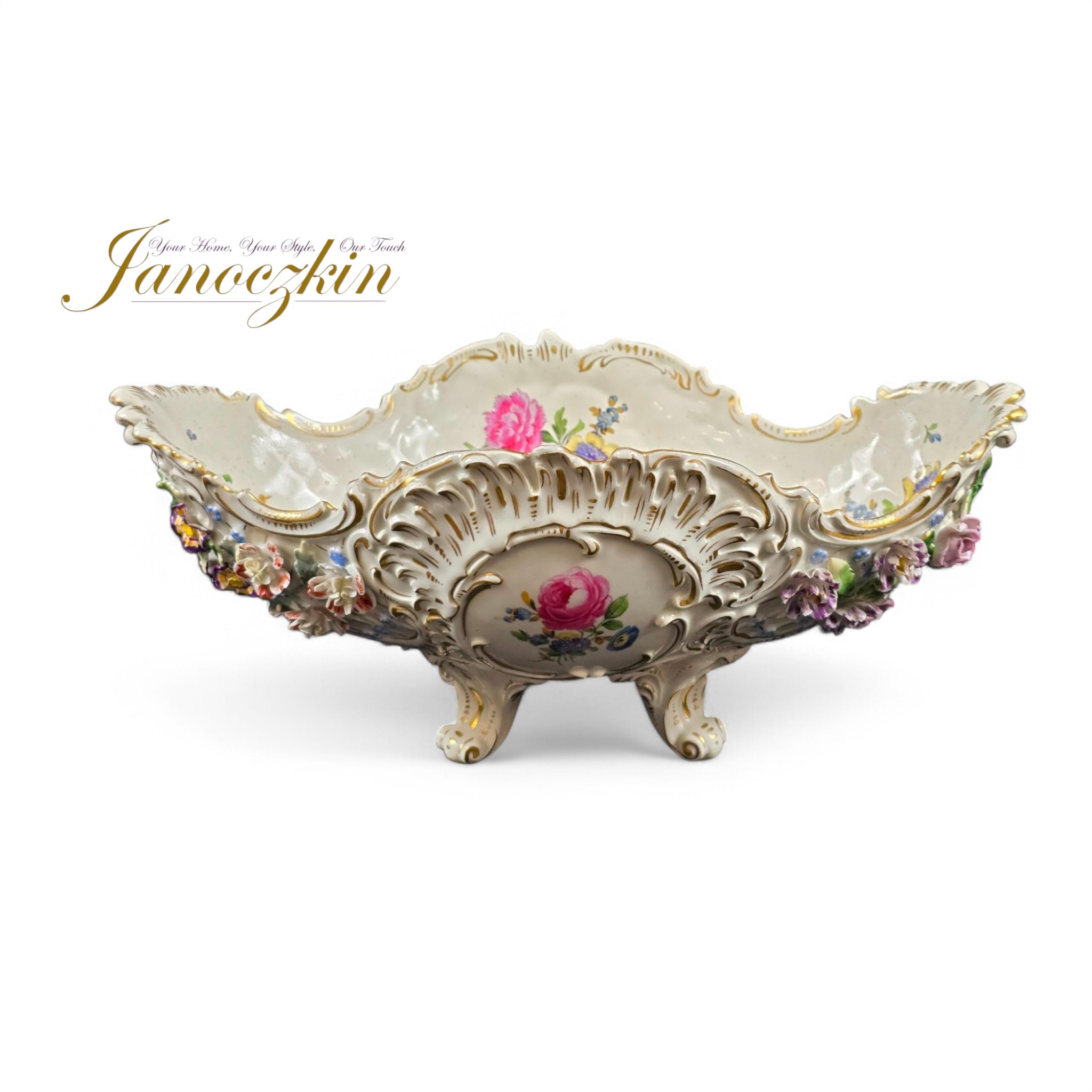
A Legacy of Elegance and Craftsmanship
For centuries, fine porcelain has been a symbol of luxury, artistry, and refinement. Among the most celebrated porcelain makers in the world, Dresden porcelain stands out for its intricate designs, breathtaking hand-painted details, and exquisite craftsmanship. Whether adorned with delicate floral motifs, gilded embellishments, or romantic Rococo-style figures, antique Dresden china and porcelain pieces continue to captivate collectors and enthusiasts alike.
Dresden fine china and a curated selection of exquisite antiques can be acquired at Janoczkin.com, the online home of Gregory Janoczkin Antiques. Specializing in rare and high-quality European porcelain, Gregory Janoczkin offers an impressive collection of hand-painted Dresden porcelain, Meissen, and other fine antiques, each carefully selected for its craftsmanship and historical significance. Whether you’re a seasoned collector or looking for a statement piece to elevate your home décor, Janoczkin.com provides a trusted source for authentic and beautifully preserved antique treasures. Explore the collection today and discover timeless elegance at Gregory Janoczkin Antiques.
The History of Dresden Porcelain
Dresden porcelain has its origins in Saxony, Germany, a region renowned for its porcelain production since the early 18th century. The story of Dresden china is closely tied to the famous Meissen porcelain manufactory, which was established in 1710 under the patronage of Augustus the Strong, Elector of Saxony. Meissen was the first European factory to successfully produce true hard-paste porcelain, an art form previously exclusive to China.
As demand for fine porcelain grew, a number of independent decorating studios emerged in Dresden, the cultural and artistic center of Saxony. These studios did not manufacture porcelain themselves but instead sourced blank porcelain pieces—often from Meissen or other German makers—and applied elaborate hand-painted decorations. By the mid-19th century, Dresden became synonymous with some of the finest hand-decorated porcelain in the world.
What Makes Dresden Porcelain Unique?
Dresden porcelain is highly distinguishable due to its ornate and delicate designs. Some of the most iconic features include:
Intricate Hand-Painted Details – Dresden pieces often feature detailed floral arrangements, mythological scenes, pastoral landscapes, and cherubic figures, all carefully painted by skilled artisans.
Applied Porcelain Flowers – Many Dresden porcelain items, such as vases and bowls, showcase three-dimensional floral decorations, each petal sculpted and attached by hand.
Gilded Accents – Gold gilt is frequently used to enhance the beauty of Dresden porcelain, especially along rims, handles, and decorative flourishes.
Rococo and Baroque Influences – Dresden designs often reflect the opulence of the Rococo era, with flowing curves, ornate scrollwork, and romantic motifs.
Reticulated (Pierced) Patterns – Many Dresden pieces, particularly centerpiece bowls and plates, feature delicate openwork or lattice designs, showcasing the high level of craftsmanship.
Collecting Antique Dresden Porcelain
Antique Dresden porcelain remains a favorite among collectors due to its beauty, craftsmanship, and historical significance. When acquiring pieces, here are a few key points to consider:
Authenticity: Genuine Dresden porcelain is typically marked with a blue crown and cross swords or a variation of the word “Dresden” in script. However, since many studios operated in the city, marks can vary.
Condition: Due to the delicate nature of Dresden porcelain, it is common to find minor wear on gold accents or slight paint loss. However, major chips, cracks, or missing applied flowers can significantly impact the value.
Rarity and Design: Unique designs, elaborate hand-painting, and pieces from well-known Dresden studios (such as Ambrosius Lamm or Helena Wolfsohn) tend to be the most sought after.
Functionality: Dresden porcelain includes a wide range of items, including figurines, tea sets, plates, vases, and centerpiece bowls—each offering a different appeal for collectors and decorators.
Caring for Your Dresden Porcelain
To maintain the beauty and integrity of Dresden porcelain, proper care is essential:
Handle with Care: Always pick up porcelain pieces with both hands and avoid placing pressure on delicate applied flowers or handles.
Gentle Cleaning: Use a soft brush or microfiber cloth to remove dust. For deeper cleaning, mild soapy water and a damp cloth can be used—never submerge the porcelain in water.
Avoid Direct Sunlight and Heat: Prolonged exposure to sunlight can cause fading, while extreme temperature changes can lead to cracking.
Safe Storage: Display your Dresden pieces in a secure cabinet with soft padding underneath to prevent accidental chipping.
The Enduring Charm of Dresden Porcelain
Whether you’re a seasoned collector or just beginning to appreciate the beauty of fine porcelain, Dresden china offers an exquisite glimpse into the artistry and craftsmanship of a bygone era. Each piece tells a story—of master artisans, opulent European traditions, and the timeless allure of delicate porcelain.
From ornate centerpiece bowls to delicately painted figurines, Dresden porcelain remains a treasured addition to any collection, embodying elegance, history, and sophistication that continues to inspire admiration worldwide.
Would you like help identifying or valuing a specific Dresden piece in your collection? Let us know in the comments!
